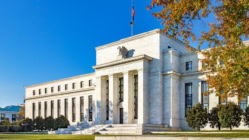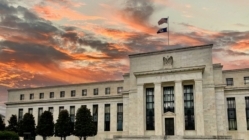
I received numerous questions in regard to mortgage rates yesterday, e.g. Will they come down again? Should I lock now or wait? What do I think will happen?
As always, my answer was don’t wait to lock in your rate b/c nobody has a clue what will happen.
VARIABLES AT PLAY
I responded that way b/c there are so many variables at play, and here are just a few.
INFLATION
The threat of inflation has been a concern since the 1990s but we have seen very little of it until now – and that is largely what is spooking the markets (higher inflation results in higher rates).
The government and press reports rely heavily on the Consumer Price Index or CPI – which has been showing very modest price increases despite evidence to the contrary and many investors now give much less weight to CPI reports.
We are already seeing massive “asset inflation,” which is something I blogged about last year.
In addition, the Financial Times recently shared a study of prices for 750 “essential items” on Amazon over the last year. The prices for 409 of those items increased by 20% and 136 of the items doubled in price.
CAUSES OF INFLATION
Interestingly (or alarmingly), economists don’t fully understand the causes of inflation, but here a few and how they manifest will influence inflation and interest rates significantly.
- Demand Pull. This is inflation that surfaces when demand exceeds supply, like we see in the housing market right now. This is often short-lived, as producers typically increase supplies to meet demand, causing prices to fall.
- Cost Push. This is inflation that surfaces when production costs increase b/c of higher commodity, fuel, labor, transportation, tariff and other costs. According to Barry Habib (of MBS Highway fame), most of the inflation we are seeing now is “cost push” b/c supply chains have been broken as a result of the COVID crisis. Habib thinks supply chains will come back to life later this year, eliminating most of the inflation we see now.
- Money Printing/Velocity. Our total supply of money increased by as much as 40% last year alone. When there is a massive increase in the number of dollars chasing the same number of goods, we would expect to see inflation no matter what. BUT – unless banks lend that money and unless consumers spend that money, causing it to turn over in the economy, we don’t see inflation. This money turnover is called “velocity,” and high savings rates and low velocity rates are major reasons why we have not seen more inflation over the last 12 years, despite all of the Fed’s stimulus and “quantitative easing.”
If everyone plunges back into the economy and starts to spend like crazy after COVID concerns abate, it is likely that we will see significant inflation.
UNEMPLOYMENT & ECONOMY
Anywhere from eight to ten million jobs were lost b/c of the COVID crisis, depending on the source. How and when these people return to the labor markets will significantly affect the economy.
And a stronger economy usually means higher rates for a variety of reasons.
STIMULUS & ECONOMY
President Biden’s $1.9 trillion stimulus plan is also expected to further bolster the economy and possibly spark additional inflation, so it too is making investors nervous and pushing up rates.
TECHNOLOGY AND DEFLATION
The other reason we have not seen more inflation is the massive deflationary pressures brought on by technology. Examples include smartphones, TVs, computing power, and even automobiles.
This force has been extraordinarily powerful over the last 20 years and will likely only increase – which could keep inflation in check.
FED POWER
A final consideration is the power of the Fed itself. If rates increase sharply, the Fed will be in panic mode b/c the government and our entire private sector are literally addicted to low rates.
Higher rates will increase borrowing costs significantly for governments, businesses, and consumers and could potentially tank the economy.
As a result, the Fed will likely attempt to push rates down with additional asset (MBS and Treasury Bond) purchases and other devices.
Whether they will have the ability or the power to continue to do so indefinitely remains to be seen.
CONCLUSION
Because there are so many variables at play, I don’t recommend trying to time the market at all. As always, I recommend locking now and then simply refinancing later if rates fall.
CAVEAT/DISCLAIMER: I am oversimplifying the above explanations for brevity’s sake, and I am no doubt missing many variables. I am, however, merely trying to illuminate how much is up in the air and/or unknown.
Jay Voorhees
Founder/Broker | JVM Lending
(855) 855-4491 | DRE# 1197176, NMLS# 310167
























